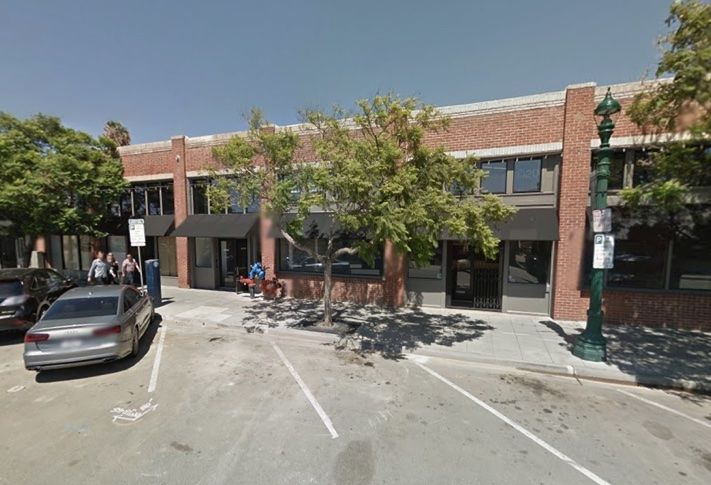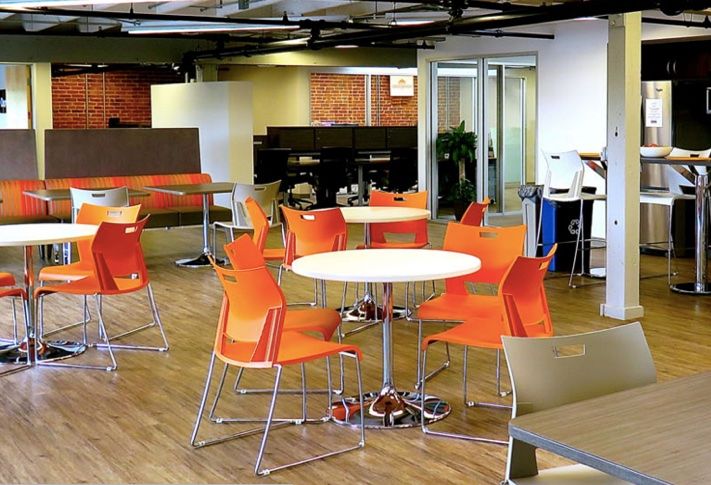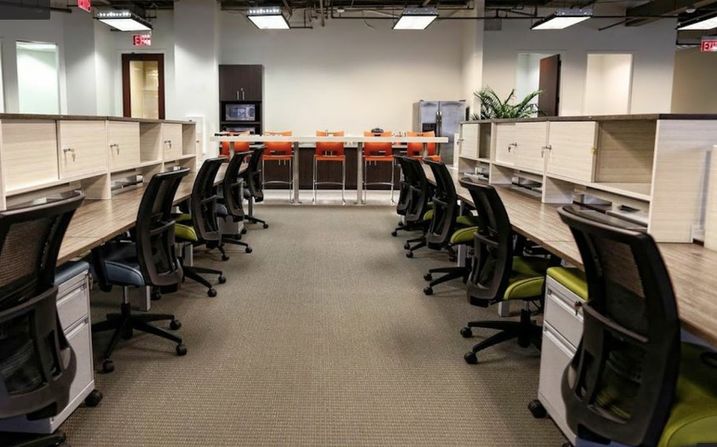Why Office Users Of All Sizes Are Taking Co-Working Space
More companies, including those larger office users that once shunned co-working space, are starting to use or consider shared workplaces, a recent CBRE study revealed.

CBRE senior associate Evan Knudson, a San Diego office specialist, spoke with Bisnow on what is driving firms of all sizes to view co-working as an opportunity. Evan (snapped on vacation with wife Whitney) tells us there are a variety of reasons why users of all sizes are now turning to co-working space.
Larger office users traditionally stayed away from co-working facilities, thinking they were priced at a premium compared to traditional space, and utilized mostly by entrepreneurs, small businesses or Millennials. But the CBRE survey of large global firms found more than 40% of respondents are using or considering shared workplaces and 63% of users are aged 31 to 50, with an average age of 40.
Most office landlords require at least a three-year lease, Evan says, while co-working spaces provide room for potential growth, without getting locked into a space that may be too large or too small before the lease expires. Evan helped a fast-growing, London-based company expand into San Diego while getting a feel for the marketplace before making a permanent commitment. He placed the company’s 25 San Diego employees into DeskHub, a 15k SF co-working facility in Little Italy.
Pictured is DeskHub's San Diego location at 2159 India St in Downtown's Little Italy neighborhood.
The London-based company has added five to six more employees since then, Evan tells us. “They will want to be housed in their own office at some point, but the co-working arrangement gives them a flexible alternative in the meantime,” he adds, noting co-working space provides month-to-month or a longer-term option at a decreased rate. “It takes capital to start up a traditional office space for things like furnishings and a communication system, but all of this is covered in rent at co-working facilities,” Evan says. “This preserves upfront capital to deploy to things that make the company money.”
Contrary to the perception co-working space is more expensive than leased space, a CBRE study found it is a cost-effective alternative to a traditional lease in gateway markets, he says. The study compared options for a 10-person office in Washington, DC. The shared-workplace users saved more than 15% over a leased space, as the average annual cost for co-working space with a 10-seat capacity was $52k to $84K, compared with $72k to $92k for a leased space.
Evan says co-working spaces provide a collaborative environment not found in traditional office space—with creative ideas organically generated from the interactions between creative and entrepreneurial professionals, both from within and outside the firm’s own employee group. Speed to market and quality of infrastructure make co-working a catalyst that allows companies entering the San Diego market to flourish, he continues.
CBRE Americas head of occupier research Julie Whelan says large users can use shared workplaces to access new markets, attract and retain talent and introduce innovation. She says that contemporary shared workplaces can be powerful tools for all sizes of companies, enhancing culture and values of an organization, promoting innovative thinking and improving employee retention by providing a better workplace experience.
CBRE’s occupier survey found today’s labor force puts a high degree of importance on the desire for a great “work experience”—specifically, functionality of the workplace, freedom of work style and sense of community between related organizations.
More of San Diego's DeskHub space is shown above and below.
CBRE senior managing director for workplace strategy Lenny Beaudoin says co-working operators tend to embrace a more progressive approach to design than traditional landlords. Their focus is on integrating what’s new and cool—inspiring common areas and sought-after amenities—with highly functional space in which to get work done, he says.
Today’s business strategy calls for rapid testing of ideas — the idea of “failing fast to succeed sooner,” Lenny adds. Co-working models draw on concepts first developed for business incubators by universities to promote shared learning and co-innovation.
While office users are rapidly adopting the co-working concept, Evan says one of the challenges in the SD market is a lack of available co-working space with these attributes. There are fewer than 20 operators with between 6k SF and 15k SF in the marketplace, for a total of just over 100k SF. WeWork has not yet signed a lease in San Diego. Evan says the largest and most progressive SD co-working facility is DeskHub with 15k SF, compared to the standard WeWork model of 40k SF to 60k SF.



